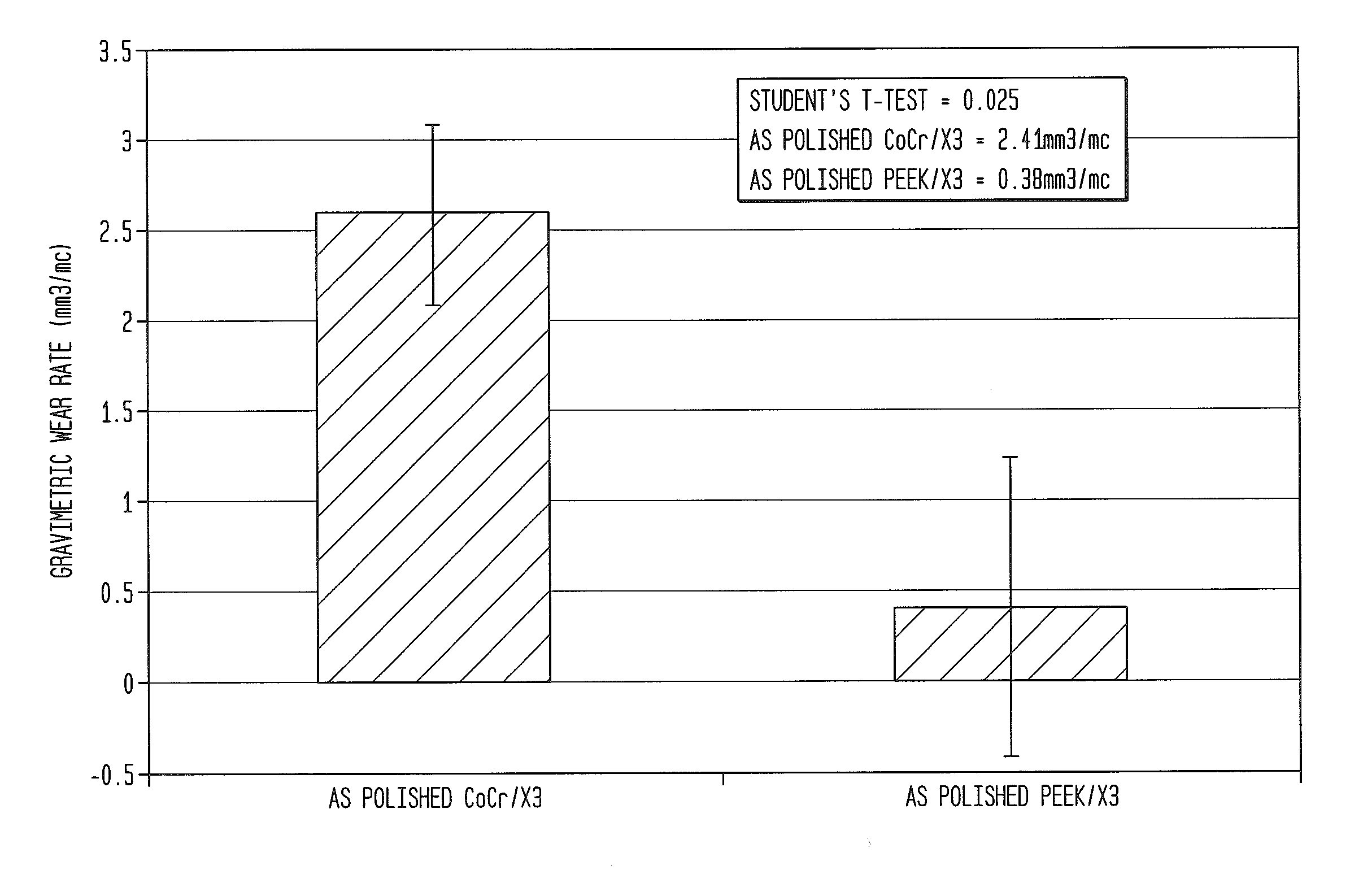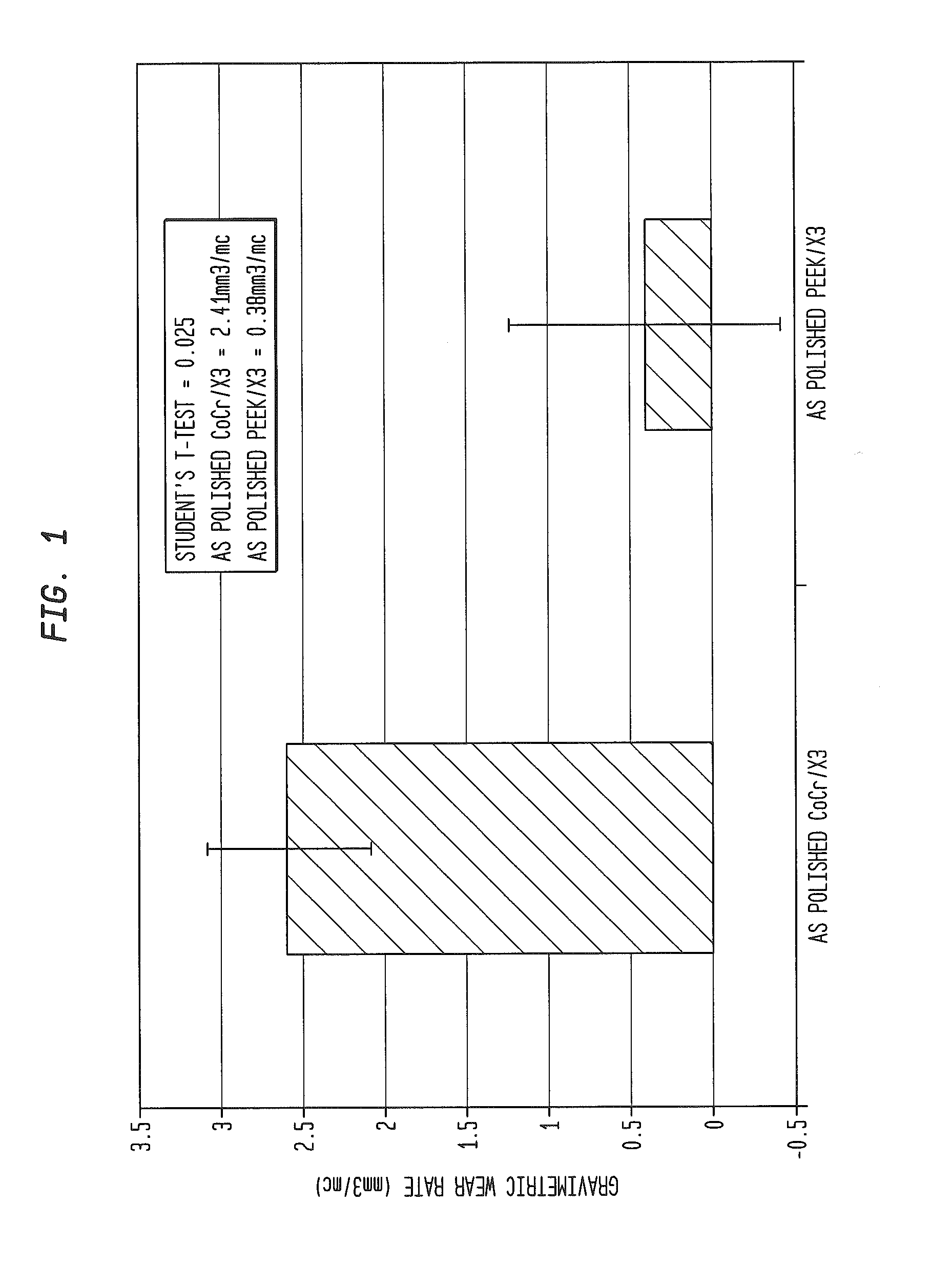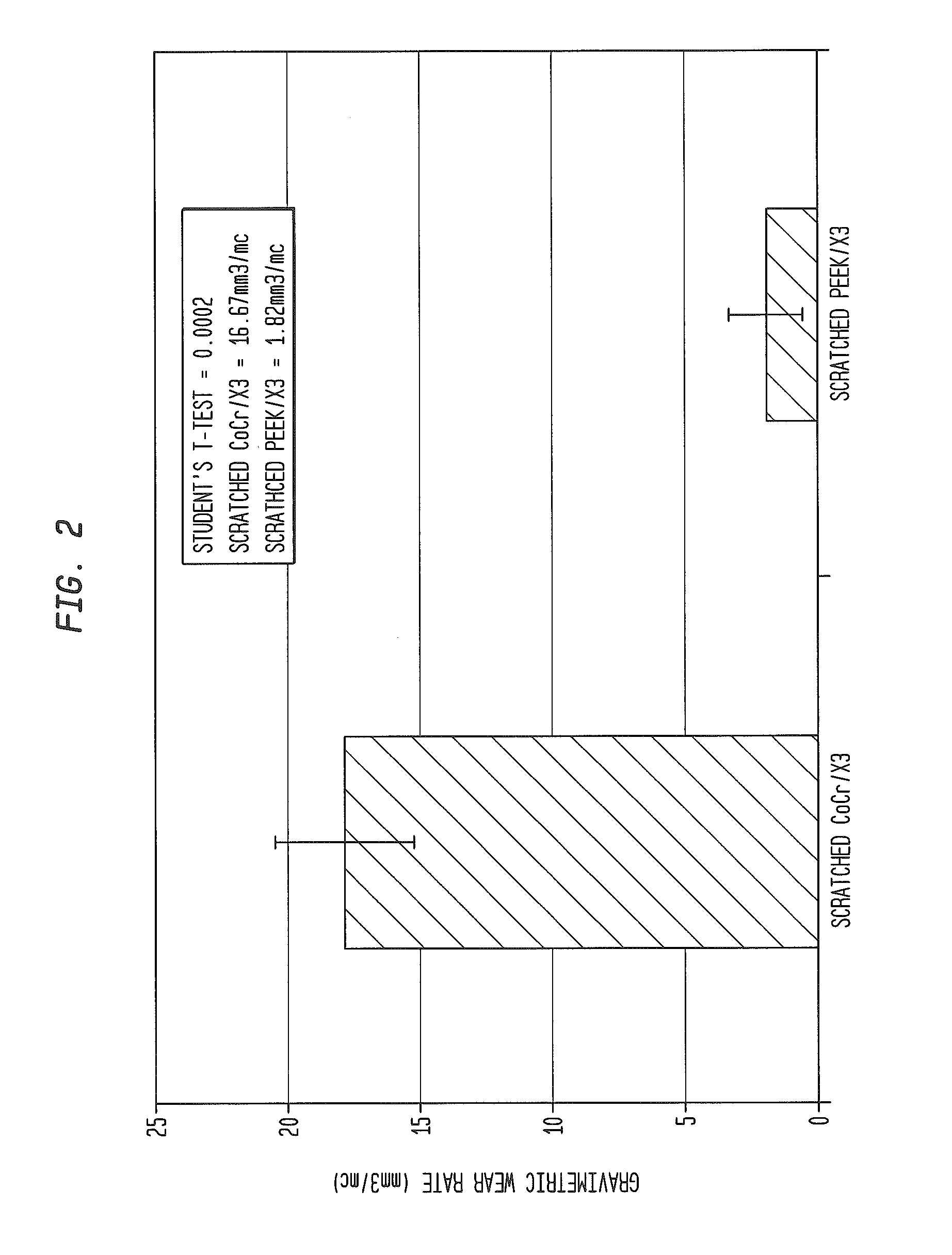Orthopedic paek-on-polymer bearings
- Summary
- Abstract
- Description
- Claims
- Application Information
AI Technical Summary
Benefits of technology
Problems solved by technology
Method used
Image
Examples
example 1
[0039]A 1.5″ diameter pure PEEK extruded rod was purchased from McMaster with the brand name “Quadrant Ketron ®1000 (Reading, Pa.)”, and machined into 32 mm diameter femoral heads. The 32 mm PEEK heads were polished to an average surface roughness of Ra=20 nm. Three 32 mm PEEK heads were tested against three 32 mm sequentially crosslinked UHMWPE cups in a hip simulator under maximum load of 2450 N at 1.0 HZ in 50% diluted Alpha Calf serum lubricant. Three 32 mm CoCr heads against three 32 mm X3™ UHMWPE cups were conducted in the same wear test as a control.
[0040]Wear results of the sequentially crosslinked polyethylene cup (X3) (about shore D 70) against as-polished CoCr (Vicher 450) and PEEK heads (about shore D 85) at 1.75 million cycles on the hip simulator are shown in FIG. 1. The X3™ UHMWPE cup in a PEEK-on-UHMWPE wear couple had an average wear rate of about 0.38 mm3 / million cycles (Mc), while the cup in CoCr-on-UHMWPE wear couple had an average wear rate of about 2.41 mm3 / mil...
example 2
[0041]Everything was the same as in Example 1, except 32 mm PEEK heads were intentionally scratched and then wear tested against 32 mm X3™ UHMWPE cups. White light microscopy showed that peak-to-valley height of the scratches was about 25 micron (μm), which is much higher than the 3.5 micron for a CoCr head scratched in the same way. The wear results indicated that the scratched 32 mm PEEK heads articulating against 32 mm sX3™ UHMWPE cups had an average wear rate of 1.82 mm3 / Mc (FIG. 2). By comparison, the non-scratched CoCr-on-X3™ UHMWPE pair showed a higher wear rate (2.41 mm3 / Mc, see FIG. 1). A more direct comparison was to use scratched CoCr heads against X3™ UHMWPE cups, which had an average wear rate of about 16.67 mm3 / Mc, according to R. Lee, A. Essner, A. Wang, W. L Jaffe available online 2 Apr. 2009 “Scratch and Wear Performance Of Prosthetic Femoral Head Components Against Crosslinked UHMWPE Sockets”(Wear, 2009). This means that scratching the PEEK bearing surface does not...
example 3
[0045]Everything was the same as Example 1, except 40 mm PEEK heads were rotated against 44 mm X3™ UHMWPE cups, which is a size mismatch done to simulate a non-conforming joint such as a knee joint. This mismatched PEEK-on-X3™ UHMWPE pair did not have a measurable wear rate (gravimetric weight gain more than weight loss). In comparison, the wear rate of the perfectly matched 32 mm X3™ UHMWPE cup against 32 mm CoCr head was measurable (2.41 mm3 / Mc as shown in FIG. 1).
PUM
| Property | Measurement | Unit |
|---|---|---|
| Molecular weight | aaaaa | aaaaa |
Abstract
Description
Claims
Application Information
 Login to View More
Login to View More - R&D
- Intellectual Property
- Life Sciences
- Materials
- Tech Scout
- Unparalleled Data Quality
- Higher Quality Content
- 60% Fewer Hallucinations
Browse by: Latest US Patents, China's latest patents, Technical Efficacy Thesaurus, Application Domain, Technology Topic, Popular Technical Reports.
© 2025 PatSnap. All rights reserved.Legal|Privacy policy|Modern Slavery Act Transparency Statement|Sitemap|About US| Contact US: help@patsnap.com



